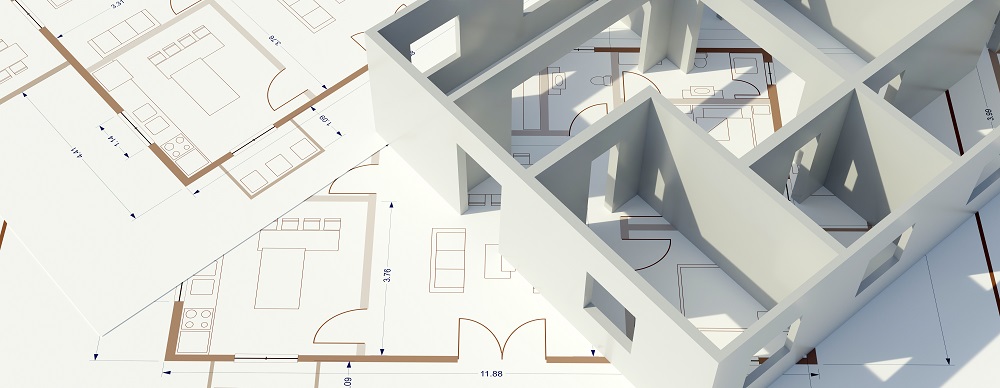Architectural Design
What is Architectural Design?
Architectural design is the process of creating plans, drawings, and specifications for buildings and structures. It involves the integration of aesthetic, functional, and technical considerations to design spaces that meet the needs of occupants while adhering to structural, regulatory, and environmental requirements.
Architectural design encompasses various aspects, including spatial organization, form, materials, and technology. Architects use principles of design, such as proportion, balance, rhythm, and harmony, to create buildings that are visually appealing and functional.
The architectural design process typically begins with a thorough analysis of the site and the client’s requirements. Architects conduct site surveys, analyze environmental factors, and assess zoning and building codes to inform the design process. They collaborate with clients, stakeholders, and consultants to establish project goals, budgets, and timelines.
Why learn Architectural Design nowadays?
In today’s rapidly evolving world, the importance of architectural design cannot be overstated. Here are several reasons why learning architectural design is essential in the modern era:
- Creativity and Innovation: Architectural design fosters creativity and innovation by encouraging designers to think outside the box and explore new ideas, materials, and technologies. Learning architectural design enables individuals to develop their creative skills and contribute fresh perspectives to the built environment.
- Sustainability and Environmental Responsibility: With growing concerns about climate change and environmental sustainability, architectural design plays a crucial role in creating buildings that are energy-efficient, resource-efficient, and environmentally friendly. By learning architectural design, individuals can explore sustainable design principles and practices that minimize the environmental impact of buildings and promote a more sustainable future.
- Urbanization and Population Growth: As the global population continues to grow, urbanization is on the rise, leading to increased demand for well-designed buildings and urban spaces. Learning architectural design equips individuals with the skills and knowledge needed to address the complex challenges of urbanization, such as housing shortages, transportation infrastructure, and community development.
- Technology and Digitalization: The integration of technology and digital tools has transformed the field of architectural design, enabling architects to visualize, simulate, and analyze building designs in unprecedented ways. By learning architectural design, individuals can harness the power of digital tools such as BIM (Building Information Modeling), parametric design software, and virtual reality to create innovative and responsive designs.
- Cultural Heritage and Identity: Architectural design plays a significant role in preserving cultural heritage and identity by celebrating local traditions, materials, and craftsmanship. Learning architectural design allows individuals to explore architectural history and heritage conservation principles, ensuring that future generations can appreciate and learn from the architectural treasures of the past.
In conclusion, learning architectural design is essential in today’s world, as it empowers individuals to create sustainable, innovative, and culturally rich built environments that enhance the quality of life for people around the globe.
Work in Architectural Design
Working in architectural design offers a wide range of opportunities for individuals interested in shaping the built environment and making a positive impact on society. Here are several career paths in architectural design:
- Architect: Architects are responsible for designing buildings and overseeing their construction from concept to completion. They work on projects ranging from residential homes and commercial buildings to public institutions and urban developments. Architects collaborate with clients, engineers, and contractors to create functional, aesthetically pleasing, and sustainable designs that meet the needs of occupants and communities.
- Urban Designer: Urban designers focus on the planning and design of cities, neighborhoods, and public spaces. They address issues such as land use, transportation, and community development to create vibrant, livable, and sustainable urban environments. Urban designers collaborate with urban planners, landscape architects, and policymakers to shape the future growth and development of cities.
- Interior Designer: Interior designers specialize in the design and decoration of interior spaces, including residential, commercial, and institutional interiors. They work closely with clients to understand their aesthetic preferences, functional requirements, and budget constraints, creating interior designs that reflect their personality and enhance their quality of life.
- Landscape Architect: Landscape architects design outdoor spaces such as parks, gardens, and recreational areas. They combine elements of art, science, and ecology to create landscapes that are aesthetically pleasing, ecologically sustainable, and socially beneficial. Landscape architects collaborate with architects, urban planners, and environmental scientists to design landscapes that promote biodiversity, mitigate environmental impacts, and enhance the well-being of communities.
- Building Information Modeler (BIM) Specialist: BIM specialists use specialized software and digital tools to create virtual models of buildings and construction projects. They work with architects, engineers, and contractors to develop detailed 3D models that facilitate coordination, communication, and collaboration throughout the design and construction process.
Overall, working in architectural design offers diverse and rewarding career opportunities for individuals passionate about creating innovative, sustainable, and socially responsible built environments.
Why is Architectural Design Crucial for Innovation?
Architectural design plays a crucial role in driving innovation across various industries and sectors. Here are several reasons why architectural design is essential for fostering innovation:
- User-Centered Design: Architectural design places a strong emphasis on understanding the needs and preferences of users, whether they are individuals, communities, or organizations. By adopting a user-centered design approach, architects can create buildings and spaces that are tailored to the unique requirements and aspirations of their occupants, fostering creativity, productivity, and well-being.
- Cross-Disciplinary Collaboration: Architectural design encourages collaboration and interdisciplinary interaction among architects, engineers, scientists, artists, and other professionals. By bringing together diverse perspectives and expertise, architects can explore innovative solutions to complex challenges, such as climate change, urbanization, and social equity, leading to breakthroughs in design thinking and practice.
- Integration of Technology: The integration of technology and digital tools has revolutionized the field of architectural design, enabling architects to explore new design possibilities and push the boundaries of creativity. From parametric design software to advanced fabrication technologies, architects leverage cutting-edge tools and techniques to develop innovative design solutions that are responsive, adaptive, and sustainable.


